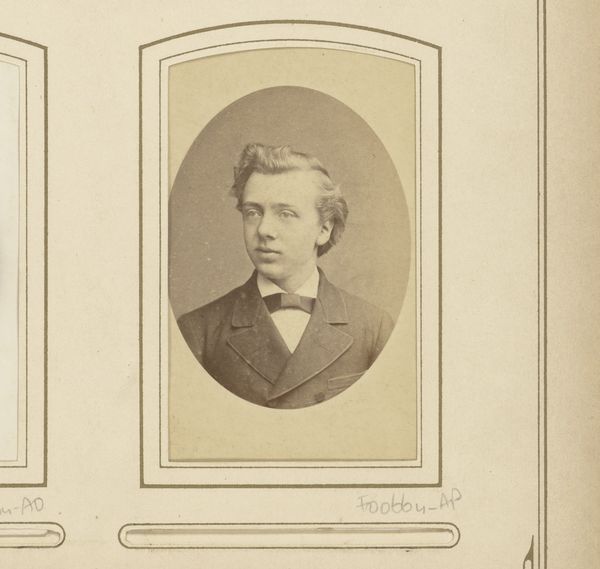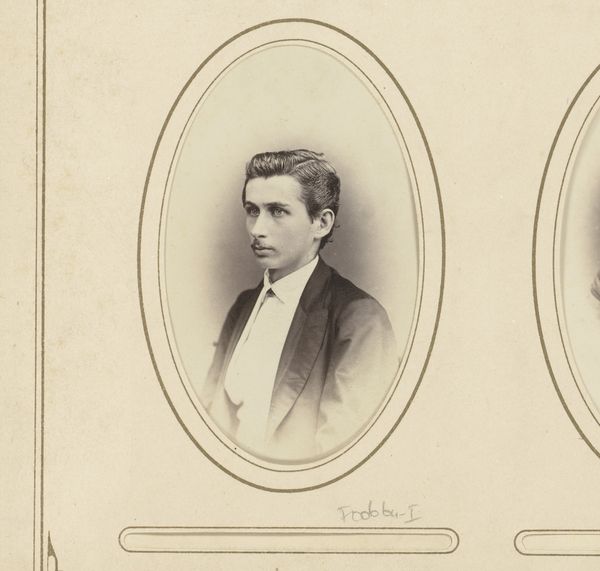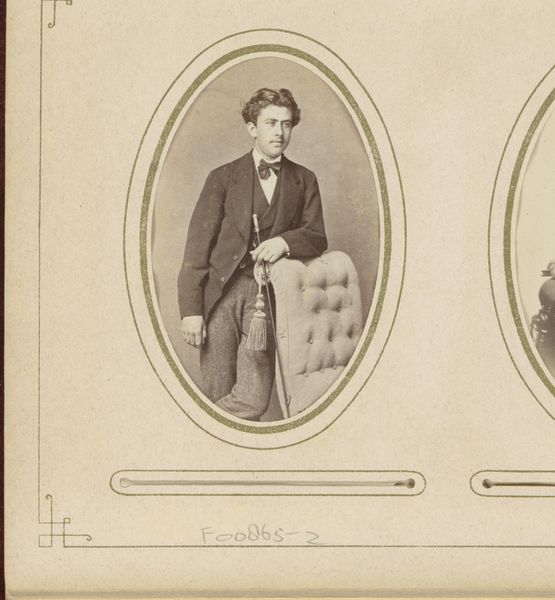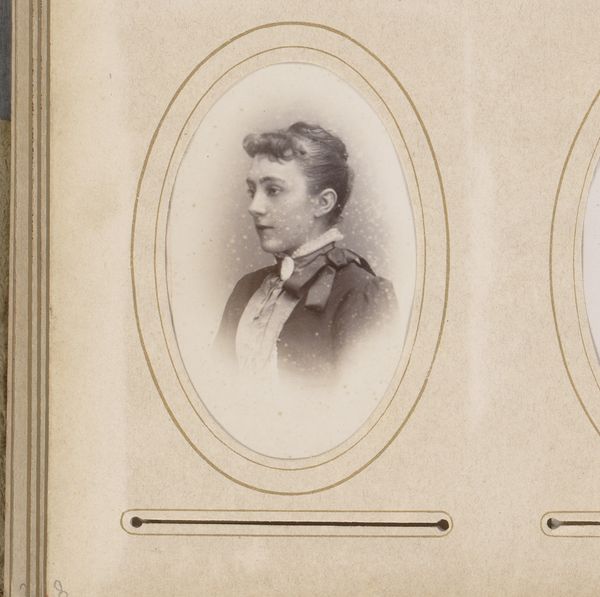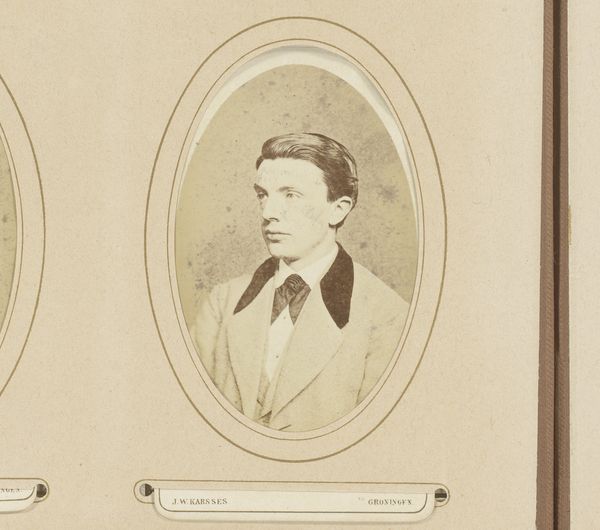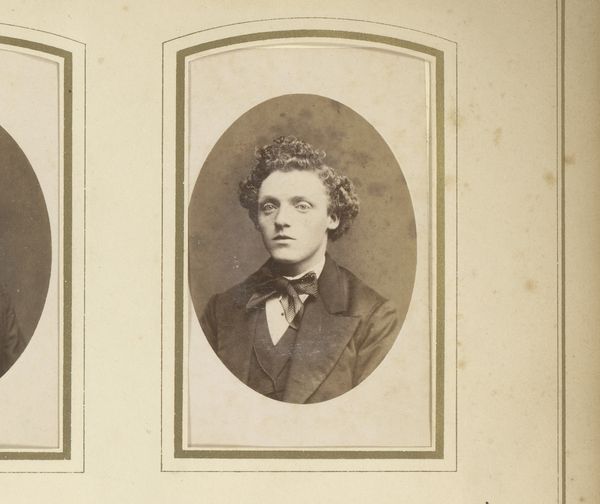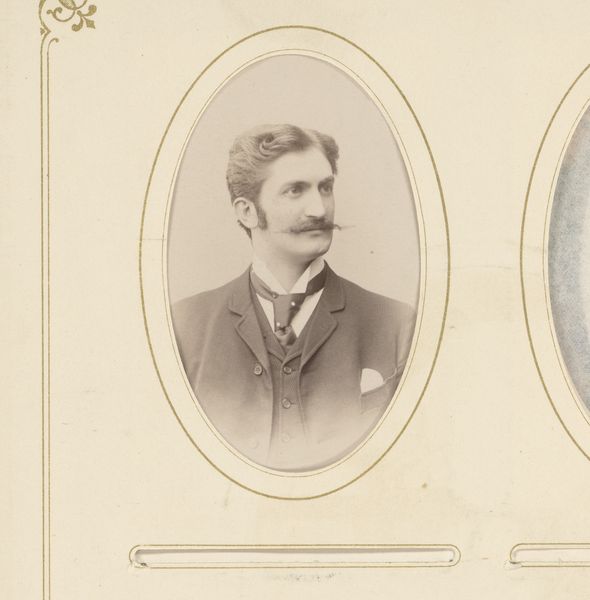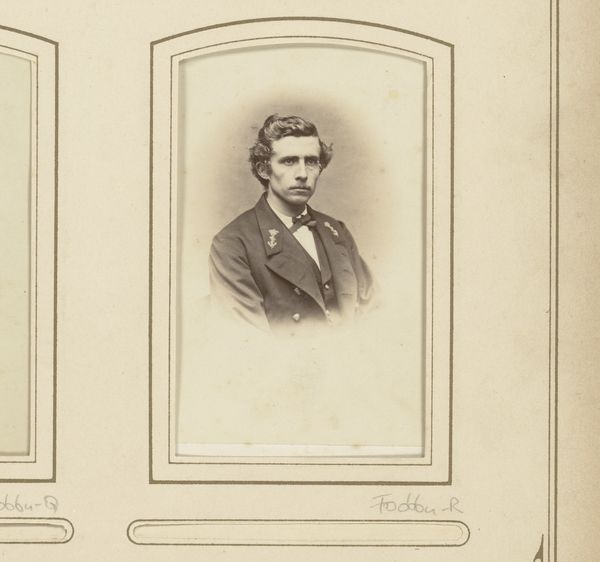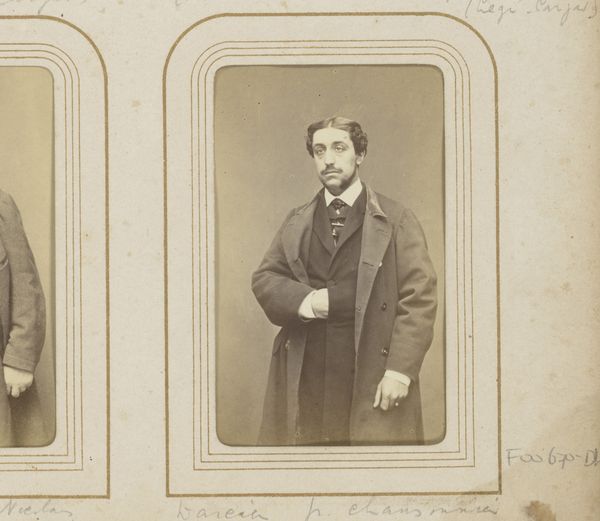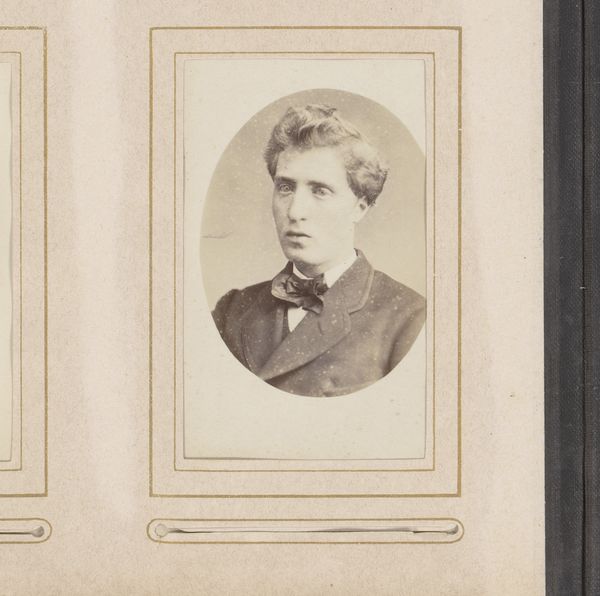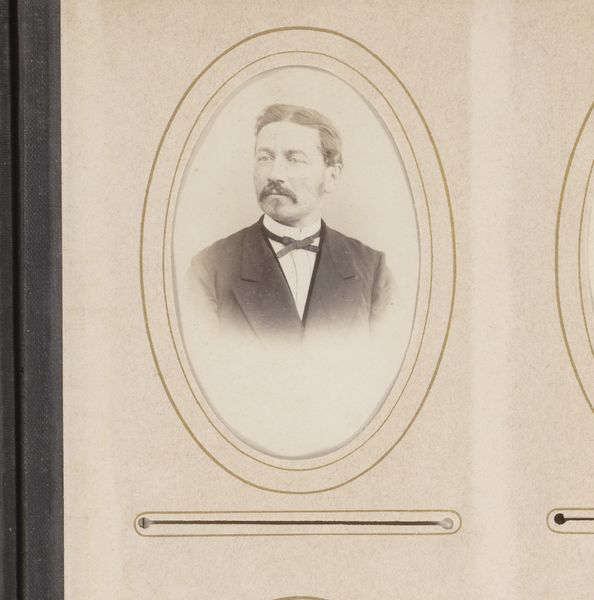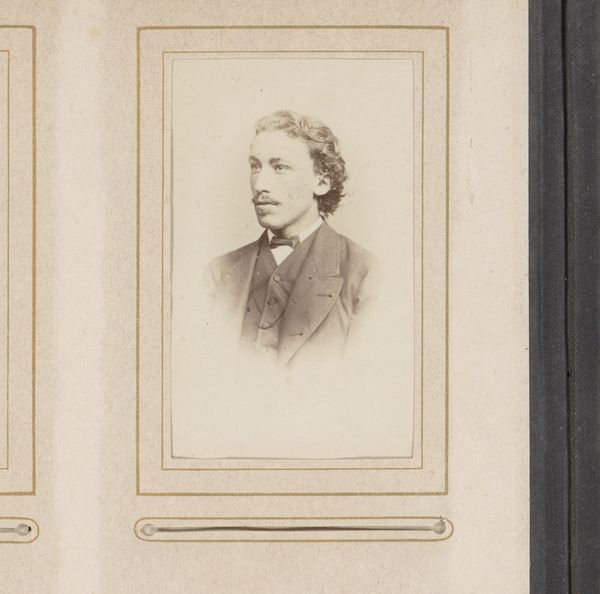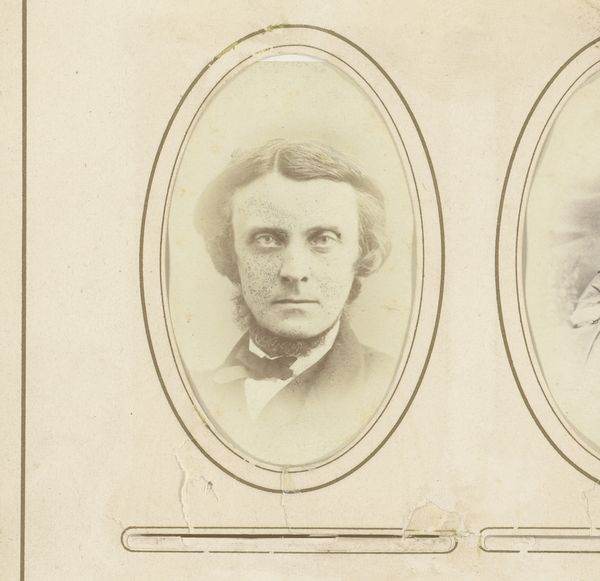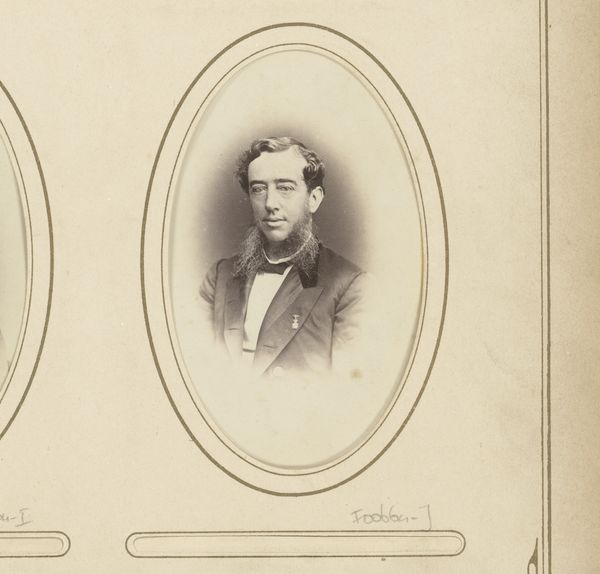
Dimensions: height 83 mm, width 50 mm
Copyright: Rijks Museum: Open Domain
Curator: This is "Portrait of a Young Man" by Albert Greiner, created between 1861 and 1874. It’s an albumen print. Editor: Immediately, the sepia tones and the young man's wistful expression give it a romantic, almost melancholy air. I wonder what societal pressures he might have faced. Curator: Considering the time, such images were frequently associated with self-presentation within particular social and artistic circles. As a photograph, the image served multiple purposes – a personal memento, or an affordable form of portraiture for families, yet simultaneously partaking in the rise of photographic portraiture's aesthetic and cultural status. Editor: Absolutely. His clothing seems deliberately styled, a kind of youthful dandyism maybe. I can’t help but wonder if his gaze away from us is a subtle form of rebellion against those expected societal norms, especially given the constraints placed on young men of that era. Curator: It’s difficult to say definitively without more information about the sitter, yet it offers an invitation to speculate on themes of representation and the individual, subjects that became newly relevant as photography became widespread and portraiture became accessible beyond aristocratic classes. Photography democratizes imagery in unprecedented ways, while also raising critical new questions about authenticity. Editor: Looking at the image through today's lens, the stark contrast in tones makes me think about identity politics and the performative aspects of masculinity. There’s a certain fragility mixed with confidence here that is pretty compelling. How does his perceived gaze affect those readings? Curator: His gaze, avoiding direct eye contact, allows the viewer space to consider their own projections. The Romantic movement had embraced such introspection and emotional expressiveness, thus influencing aesthetic preferences during that period. This wasn’t merely documentation. It was about constructing an image, participating in the symbolic construction of identity. Editor: A point well-taken. Examining it that way sheds light on our expectations of portraiture itself, both then and now. It pushes us to challenge simple assumptions. Curator: Agreed. Photography's intersection with socio-cultural movements like Romanticism truly shaped how identity and social roles were perceived and visualized. This portrait, while unassuming, encapsulates profound cultural transitions. Editor: Thinking of the quiet power simmering within this portrait now gives me a different feeling, one that’s less melancholy and more filled with quiet defiance. Curator: It makes you appreciate just how complex representations of youth and gender always are, regardless of the medium.
Comments
No comments
Be the first to comment and join the conversation on the ultimate creative platform.
